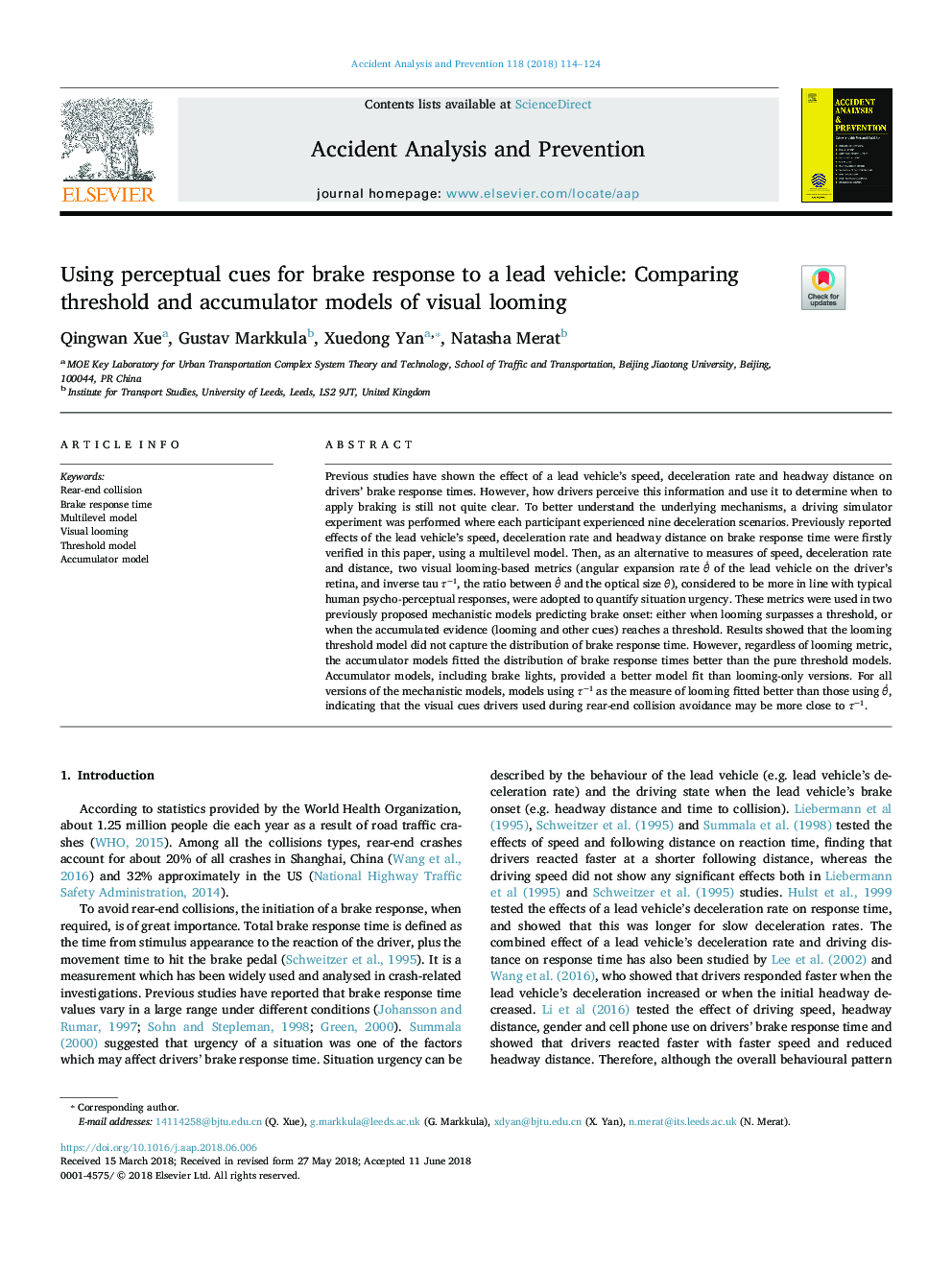| کد مقاله | کد نشریه | سال انتشار | مقاله انگلیسی | نسخه تمام متن |
|---|---|---|---|---|
| 6965072 | 1452881 | 2018 | 11 صفحه PDF | دانلود رایگان |
عنوان انگلیسی مقاله ISI
Using perceptual cues for brake response to a lead vehicle: Comparing threshold and accumulator models of visual looming
ترجمه فارسی عنوان
استفاده از نکات نوشتاری برای پاسخ ترمز به وسیله نقلیه سرب: مقایسات مدل های آستانه و باتری های ناخوشایند بصری
دانلود مقاله + سفارش ترجمه
دانلود مقاله ISI انگلیسی
رایگان برای ایرانیان
کلمات کلیدی
برخورد عقب پایان، زمان پاسخ ترمز، مدل چندسطحی، گرایش ویژوال، مدل آستانه، مدل باتری
موضوعات مرتبط
مهندسی و علوم پایه
مهندسی شیمی
بهداشت و امنیت شیمی
چکیده انگلیسی
Previous studies have shown the effect of a lead vehicle's speed, deceleration rate and headway distance on drivers' brake response times. However, how drivers perceive this information and use it to determine when to apply braking is still not quite clear. To better understand the underlying mechanisms, a driving simulator experiment was performed where each participant experienced nine deceleration scenarios. Previously reported effects of the lead vehicle's speed, deceleration rate and headway distance on brake response time were firstly verified in this paper, using a multilevel model. Then, as an alternative to measures of speed, deceleration rate and distance, two visual looming-based metrics (angular expansion rate Î¸Ë of the lead vehicle on the driver's retina, and inverse tau Ï-1, the ratio between Î¸Ë and the optical size θ), considered to be more in line with typical human psycho-perceptual responses, were adopted to quantify situation urgency. These metrics were used in two previously proposed mechanistic models predicting brake onset: either when looming surpasses a threshold, or when the accumulated evidence (looming and other cues) reaches a threshold. Results showed that the looming threshold model did not capture the distribution of brake response time. However, regardless of looming metric, the accumulator models fitted the distribution of brake response times better than the pure threshold models. Accumulator models, including brake lights, provided a better model fit than looming-only versions. For all versions of the mechanistic models, models using Ï-1 as the measure of looming fitted better than those using θË, indicating that the visual cues drivers used during rear-end collision avoidance may be more close to Ï-1.
ناشر
Database: Elsevier - ScienceDirect (ساینس دایرکت)
Journal: Accident Analysis & Prevention - Volume 118, September 2018, Pages 114-124
Journal: Accident Analysis & Prevention - Volume 118, September 2018, Pages 114-124
نویسندگان
Qingwan Xue, Gustav Markkula, Xuedong Yan, Natasha Merat,
